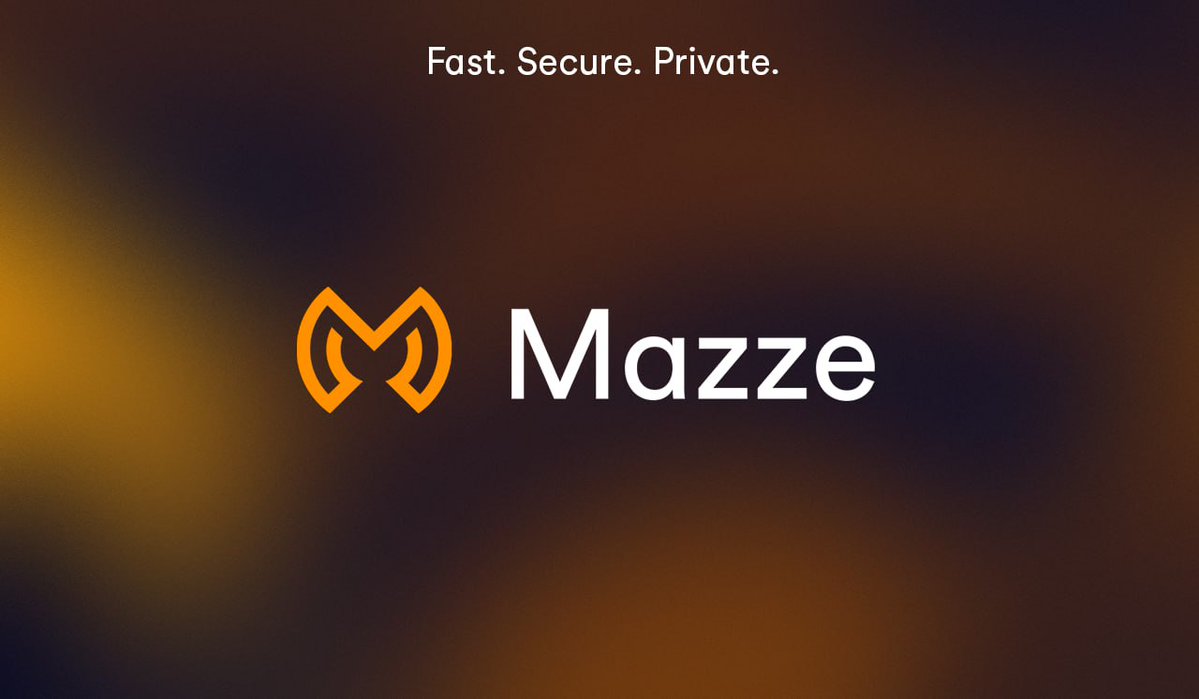[GUEST ACCESS MODE: Data is scrambled or limited to provide examples. Make requests using your API key to unlock full data. Check https://lunarcrush.ai/auth for authentication information.]  San.Eth [@Adi_bulls](/creator/twitter/Adi_bulls) on x 7401 followers Created: 2025-07-16 08:49:42 UTC Hey #Mazzerian 🔧 Why is it easier for $Mazze than for existing chains? 1️⃣ $Mazze is starting from scratch (greenfield project) There’s no historical baggage (no backward compatibility). Ethereum has an ecosystem that’s over XX years old, with millions of smart contracts that you can’t just port into ZK proofs without risk and complications. $Mazze can design the entire system from the start with ZK in mind → this is incomparably easier than upgrading an existing chain. 2️⃣ $Mazze controls its own VM and standards Ethereum uses the standard EVM → hard to convert into ZK circuits. $Mazze can use a modified EVM (or zk-friendly EVM variant) from day one: * It can avoid the most complicated parts for ZK (e.g., dynamic storage, recursion, etc.). * It can write smart contracts optimized for verification, not for redundant execution. 3️⃣ PoW with Stratum V2 + ZK is more naturally integrated for $Mazze Miners in $Mazze don’t just mine blocks—they can also generate the ZK proof of the block as part of the mining process. This is similar to "proof of work" → only now the miner also packages a ZK proof. In Ethereum, PoS validators don’t have that role and it’s hard to fit it into the existing staking system. 4️⃣ $Mazze has RandomX mining (CPU mining) RandomX allows for more decentralized mining → more people can participate in verifying and creating blocks, so there are more candidates to generate ZK proofs. In PoS networks, verification is often reserved for “wealthier” nodes with stake and expensive hardware. 5️⃣ $Mazze has no Layer X dependency Ethereum has rollups (Arbitrum, zkSync, StarkNet) that have already created an ecosystem based on Layer X solutions. $Mazze goes directly for Layer X scaling with ZK verification → no need for additional layers or bridges.  XXX engagements  **Related Topics** [zk](/topic/zk) [$mazze](/topic/$mazze) [coins zk](/topic/coins-zk) [ethereum](/topic/ethereum) [coins layer 1](/topic/coins-layer-1) [Post Link](https://x.com/Adi_bulls/status/1945405469293695167)
[GUEST ACCESS MODE: Data is scrambled or limited to provide examples. Make requests using your API key to unlock full data. Check https://lunarcrush.ai/auth for authentication information.]
 San.Eth @Adi_bulls on x 7401 followers
Created: 2025-07-16 08:49:42 UTC
San.Eth @Adi_bulls on x 7401 followers
Created: 2025-07-16 08:49:42 UTC
Hey #Mazzerian
🔧 Why is it easier for $Mazze than for existing chains?
1️⃣ $Mazze is starting from scratch (greenfield project) There’s no historical baggage (no backward compatibility). Ethereum has an ecosystem that’s over XX years old, with millions of smart contracts that you can’t just port into ZK proofs without risk and complications.
$Mazze can design the entire system from the start with ZK in mind → this is incomparably easier than upgrading an existing chain.
2️⃣ $Mazze controls its own VM and standards Ethereum uses the standard EVM → hard to convert into ZK circuits.
$Mazze can use a modified EVM (or zk-friendly EVM variant) from day one:
- It can avoid the most complicated parts for ZK (e.g., dynamic storage, recursion, etc.).
- It can write smart contracts optimized for verification, not for redundant execution.
3️⃣ PoW with Stratum V2 + ZK is more naturally integrated for $Mazze Miners in $Mazze don’t just mine blocks—they can also generate the ZK proof of the block as part of the mining process.
This is similar to "proof of work" → only now the miner also packages a ZK proof.
In Ethereum, PoS validators don’t have that role and it’s hard to fit it into the existing staking system.
4️⃣ $Mazze has RandomX mining (CPU mining) RandomX allows for more decentralized mining → more people can participate in verifying and creating blocks, so there are more candidates to generate ZK proofs.
In PoS networks, verification is often reserved for “wealthier” nodes with stake and expensive hardware.
5️⃣ $Mazze has no Layer X dependency Ethereum has rollups (Arbitrum, zkSync, StarkNet) that have already created an ecosystem based on Layer X solutions.
$Mazze goes directly for Layer X scaling with ZK verification → no need for additional layers or bridges.

XXX engagements
Related Topics zk $mazze coins zk ethereum coins layer 1